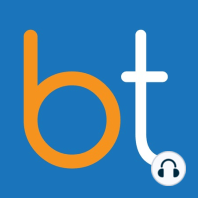47 min listen

Ep. 182 Thyroid Nodule Ablation with Dr. Tim Huber
Ep. 182 Thyroid Nodule Ablation with Dr. Tim Huber
ratings:
Length:
32 minutes
Released:
Jan 28, 2022
Format:
Podcast episode
Description
Dr. Aparna Baheti talks with Dr. Timothy Huber about performing thyroid nodule ablation procedures, including patient selection, technique pearls and pitfalls, and how to incorporate the procedure into your practice.
---
EARN CME
Reflect on how this Podcast applies to your day-to-day and earn AMA PRA Category 1 CMEs: https://earnc.me/QZ9TpA
---
SHOW NOTES
In this episode, interventional radiologist Dr. Tim Huber and our host Dr. Ally Baheti discuss the process of thyroid nodule radiofrequency ablation, including patient selection, workup, procedural technique, and follow up.
Dr. Huber describes the most common indication for ablation, which is the presence of benign thyroid nodules that cause compressive symptoms. These can affect quality of life when they restrict a patient’s ability to swallow, breathe, and speak. He recommends ablation for symptomatic nodules that are over 2 cm in diameter. Dr. Huber also mentions functional nodules as more challenging cases, but still treatable with ablation. Though ablation for thyroid malignancies is rare, it is a field of active and growing research.
In his workup, Dr. Huber uses ultrasound to assess nodular composition, vasculature, size, and nearby enlarged lymph nodes. Next, he obtains two benign fine needle aspiration samples and checks TSH levels before proceeding with ablation. During the procedure, he anesthetizes the skin of the neck with lidocaine, and periodically checks in with patients about pain level. Dr. Huber describes his “trans-isthmic approach” that keeps the needle as stable as possible. He exercises caution when ablating near the “danger triangle” containing the recurrent laryngeal nerve which innervates the vocal cords. While ablating posterior to anterior, Dr. Huber tracks echogenic changes on ultrasound.
After the procedure, patients are monitored for one hour and then followed up in one month, and then three months over the next year. Dr. Huber warns interventionalists that post-ablation zones may look disfigured on ultrasound, but this will revert back to normal within 3-6 months.
---
RESOURCES
European Thyroid Association Guidelines:
https://www.eurothyroid.com/guidelines/eta_guidelines.html
Korean Society of Thyroid Radiology Guidelines:
https://www.ncbi.nlm.nih.gov/pmc/articles/PMC6005940/
---
EARN CME
Reflect on how this Podcast applies to your day-to-day and earn AMA PRA Category 1 CMEs: https://earnc.me/QZ9TpA
---
SHOW NOTES
In this episode, interventional radiologist Dr. Tim Huber and our host Dr. Ally Baheti discuss the process of thyroid nodule radiofrequency ablation, including patient selection, workup, procedural technique, and follow up.
Dr. Huber describes the most common indication for ablation, which is the presence of benign thyroid nodules that cause compressive symptoms. These can affect quality of life when they restrict a patient’s ability to swallow, breathe, and speak. He recommends ablation for symptomatic nodules that are over 2 cm in diameter. Dr. Huber also mentions functional nodules as more challenging cases, but still treatable with ablation. Though ablation for thyroid malignancies is rare, it is a field of active and growing research.
In his workup, Dr. Huber uses ultrasound to assess nodular composition, vasculature, size, and nearby enlarged lymph nodes. Next, he obtains two benign fine needle aspiration samples and checks TSH levels before proceeding with ablation. During the procedure, he anesthetizes the skin of the neck with lidocaine, and periodically checks in with patients about pain level. Dr. Huber describes his “trans-isthmic approach” that keeps the needle as stable as possible. He exercises caution when ablating near the “danger triangle” containing the recurrent laryngeal nerve which innervates the vocal cords. While ablating posterior to anterior, Dr. Huber tracks echogenic changes on ultrasound.
After the procedure, patients are monitored for one hour and then followed up in one month, and then three months over the next year. Dr. Huber warns interventionalists that post-ablation zones may look disfigured on ultrasound, but this will revert back to normal within 3-6 months.
---
RESOURCES
European Thyroid Association Guidelines:
https://www.eurothyroid.com/guidelines/eta_guidelines.html
Korean Society of Thyroid Radiology Guidelines:
https://www.ncbi.nlm.nih.gov/pmc/articles/PMC6005940/
Released:
Jan 28, 2022
Format:
Podcast episode
Titles in the series (100)
Ep. 10 Uterine Fibroid Embolizations with Dr. Keith Pereira and Dr. Chris Beck: Dr. Keith Pereira and Dr. Chris Beck discuss buil… by BackTable Vascular & Interventional